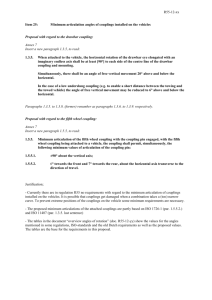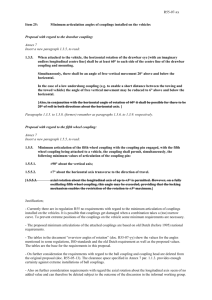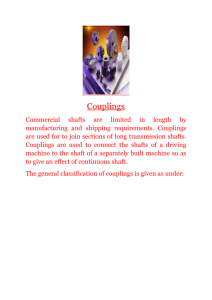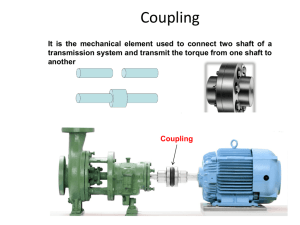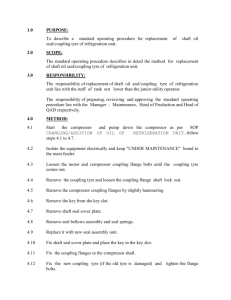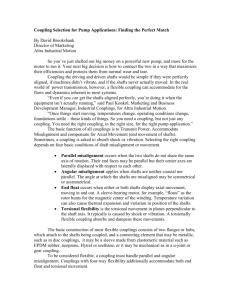File
advertisement
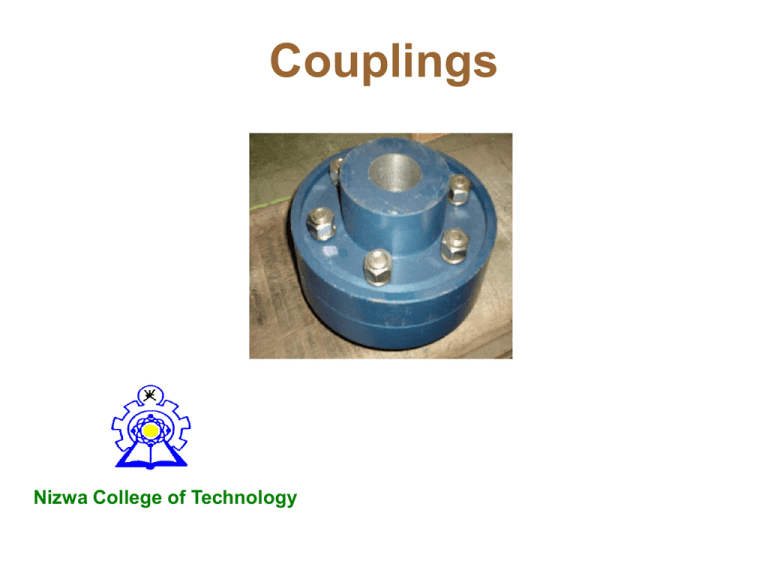
Couplings Nizwa College of Technology Couplings Coupling is a device used to connect two shafts together at their ends for the purpose of transmitting power Coupling Pump Motor Uses of coupling • To provide connection of shafts of units made separately • To allow misalignment of the shafts or to introduce mechanical flexibility. • To reduce the transmission of shock loads • To introduce protection against overloads. • To alter the vibration characteristics Types of coupling • • • Rigid Flexible Universal Flexible coupling Rigid coupling Universal coupling Rigid coupling Flange Key Hub Driven Shaft Driving Shaft Flanged Coupling •Rigid couplings are used when precise shaft alignment is required •Simple in design and are more rugged • Generally able to transmit more power than flexible couplings •Shaft misalignments cannot be compensated Flexible Coupling Flange Flange Driven Shaft Driving Shaft Pin Bush •A flexible coupling permits with in certain limits, relative rotation and variation in the alignment of shafts •Pins (Bolts) covered by rubber washer or bush is used connect flanges with nuts •The rubber washers or bushes act as a shock absorbers and insulators. Elastomeric coupling (Tyre Coupling) Elastomeric member Flange Flange Bolt •An assembly of components designed to connect axially oriented shafts in order to provide power transmission •Able to accommodate shaft misalignment through elastomeric materials Advantages and Limitations Advantages • Torsionally stiff • No lubrication or maintenance • Good vibration damping and shock absorbing qualities • Less expensive than metallic couplings • More misalignment allowable than most metallic couplings Limitations • Sensitive to chemicals and high temperatures • Usually not torsionally stiff enough for positive displacement • Larger in outside diameter than metallic coupling • Difficult to balance as an assembly Soft Foot Soft foot is a condition in which one of the feet does not sit flat on the base One leg is too short or one base plate-mounting pad is not level with the other three The bottom of one foot is not parallel with the base Soft Foot Dirt; grease; paints; rust, bent or burred shims; or too many shims are found under the foot External forces on one end of the equipment causes uneven settlement on the base Procedure to check for Soft Foot • Position the machine on its bed plate • Tighten all the bolts to its normal torque value. • Install DTI with magnetic base between bed plate and foundation, on one of the four feet. • Move indicators to 12 o'clock position, depress indicators and then zero. • Loosen one base bolt. If indicator moves away form zero, record the positive reading • Place the amount of shims that will slide under that foot. • Retighten bolt and make sure the dial indicator needle does not move. • Repeat this procedure for the remaining feet.
